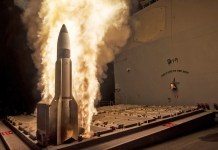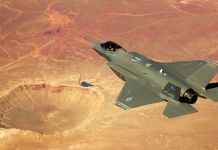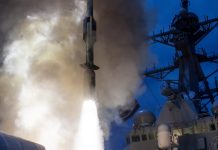However, as per the assessment of China’s military capabilities by the Pentagon, China has the world’s largest navy, which continues to grow. China realizes the shortfalls in its military capabilities and is now building a new aircraft carrier that will allow J-15 to achieve its full potential.
What Chinese Experts Say
Chinese experts speak highly of the twin-engine air superiority fighter. Produced by Shenyang Aircraft Corporation, J-15 is based on an incomplete prototype of the Russian Sukhoi Su-33 carrier-based air-superiority fighter, acquired from Ukraine.
The Global Times has reported that the aircraft has recently “conducted a series of free air combat drills in temperatures below -20 C, proving the warplane’s strong environmental adaptability.”
In the confrontational exercises in the Bohai Sea, the fighter jets completed a series of tactical moves including fake attack, breakaway, intercept, lock-on and attack, successfully shooting down aircraft, the report said.
The Chinese military experts emphasize that the exercises showed that J-15 can undertake challenges in harsh weather conditions. Being navy aircraft, they must adapt to different environments while being aboard the aircraft carrier.
But the GT report also mentions that the exercises were based around an airfield instead of an aircraft carrier. Considering the criticism around the J-15 and navy’s aircraft carriers, the latest exercises do not highlight the PLA navy’s prowess but its drawback.
Yuan Wei, deputy chief of staff of the unit, told the GT: “The PLA can now harness aircraft carriers and the fighter jets they carry. Once needed, our carriers can set out immediately to safeguard China’s maritime security.”

What Critics Say?
There are 20 to 30 Flying Shark fighter jets onboard China’s Soviet-style carriers. Experts have said that J-15 is capable but it is likely to get slaughtered in a head-to-head confrontation with a F/A-18. Among its disadvantages is the underpowered engine.
Being a heavier aircraft, it should be able to carry more weapons and fuel, and it can fly higher and faster, which is an important factor in air-to-air combat, said Timothy Heath, a senior defense researcher, RAND Corporation.
But since the fighter jet has to launch under its own power, the aircraft can take off with only a fraction of the weapons and fuel it was designed to carry, reducing its range and overall combat capability, as per the experts.
Since there have been three accidents involving J-15 fighters in their first half-decade of service, analysts have termed it as proof that China was far from capable of becoming a major carrier power for the foreseeable future.
It is pertinent to note that J-15’s current role during its deployment aboard the aircraft carrier is also to provide the PLA Navy with its first experience operating carrier-based combat jets.
The warships such as the Type 003 under construction, fielded with electromagnetic catapult systems will allow J-15 to launch with a full fuel tank and missile payload. Their larger decks will allow launching multiple aircraft simultaneously.





